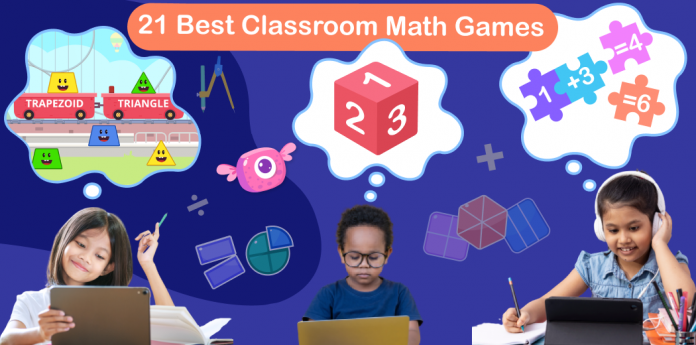Teachers are always looking for new and innovative ways to help kids learn math. Keeping things exciting and engaging can be challenging, especially when teaching complex concepts like multiplication and division. But don’t worry, we’ve got you covered! Here are 21 of the best classroom math games for kids.
Math & ELA | PreK To Grade 5
Kids see fun.
You see real learning outcomes.
Watch your kids fall in love with math & reading through our scientifically designed curriculum.
Parents, try for free Teachers, use for free
These games are not only super fun to play but will also help students learn and practice essential math skills. So without further ado, let’s get started!
21 Fun Math Games to Play in the Classroom
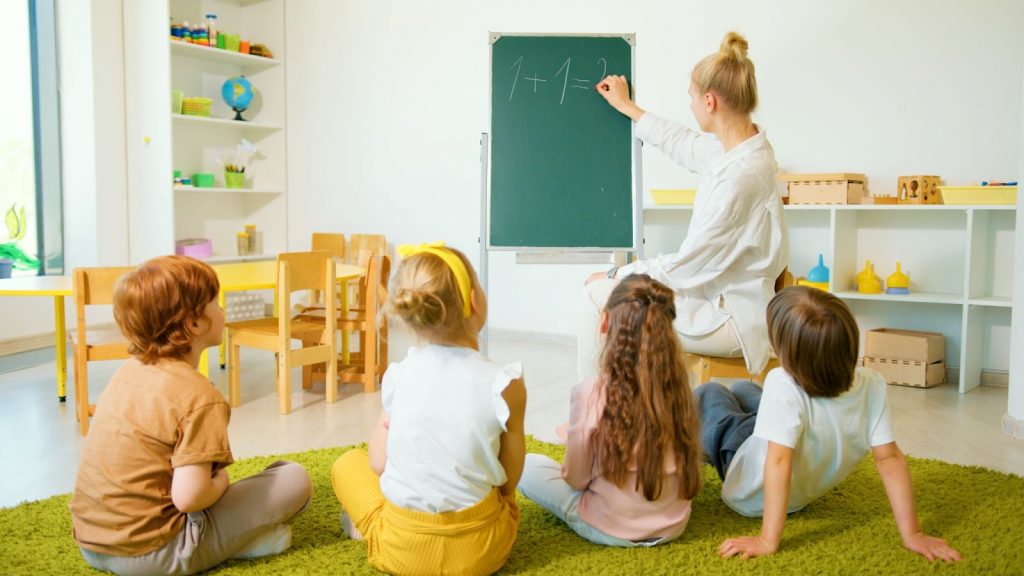
1. SplashLearn
SplashLearn makes math interactive and fun, perfect for kids and is completely free for teachers. It turns lessons into engaging games, transforming learning into an adventure. Tailored to reinforce lessons, the games directly link to what students are learning, whether geometry for second graders or fractions for fifth graders. SplashLearn adapts to each child’s pace, keeping them interested and on track.
Features:
- With access to a dashboard, teachers get quick insights into student progress, easily spotting and addressing learning gaps.
- SplashLearn tailors personalized learning journeys for each student, adjusting their pace and skill level for a truly customized math learning experience.
Here are some fun elementary math games that you can get started with:
Related Reading: Best Virtual Games for Classroom Fun & Learning
2. Round Robin Benefit
Grades: 3–5
This math game can be played with a large group of students. It is an excellent way to review material that has already been taught.
How to play:
One student starts by saying any math fact they know (for example, 2 + 2 = 4). The student next to them then says another math fact. This continues around the circle until the first person can’t think of a fact, at which point they are out. The last person standing is the winner!
3. Fraction Action
Grade: 3–5
This is one of the most effective math games for classroom participation! Not only does it help them understand fractions, but they also get to move around and have fun while doing it. The game’s objective is to be the first person to collect all the fraction cards.
How to play:
Players must answer questions correctly about fractions and collect fraction cards. The person with the most cards at the end of the game is the winner!
If you’re looking for easier and more fun ways to engage your students and simplify teaching fractions, play these fun online fraction games for free:
Related Reading: How to Teach Fraction to Kids - 11 Best Activities
4. Around the Block
Grade: 3– 5
You only need one ball for this game, but you can have multiple students playing simultaneously.
How to play:
Students will stand in a circle, and someone will start by rolling the ball to another student in the circle. The student who catches the ball must then identify which math operation they will use to solve the problem posed by the person who rolled the ball.
The answer should be called out, and the student will roll the ball to another player. If the answer is correct, the player gets to keep rolling the ball. If the answer is incorrect, that player is out of the game. Continue until there’s only one person left standing.
5. 101 and Out
Grade: K–2
How to play:
Give your students some paper and pencils. This game can be played by two players (or the entire class can also be divided into two teams). Draw a line right down the middle of a piece of paper. On the left side, player 1 will record their score, and on the right, player 2 will add their score.
Both the players take turns rolling a die. Whatever number they roll, they can decide whether they want it to remain a one-digit number or whether they want to bump it up to a tens place. For example, if they roll a 4, they can write 4 on their side of the page or write 40. The goal is to be the first person to reach 101.
6. The Counting Game
Grade: K–2
This fun classroom math game reinforces counting skills within 20, using counting worksheets. Each player needs a die and counting within 20 worksheets.
How to play:
Students take turns rolling the die. After rolling, they must count out and circle the number of items on their worksheet corresponding to the number they rolled. For example, if a student rolls a four, they should find a group of four items on their worksheet and circle it. The game continues until all items on the worksheet are circled. The aim is to practice counting in an engaging way rather than competing to finish first.
Begin with printing this counting within 20 worksheet:
7. Odds and Evens
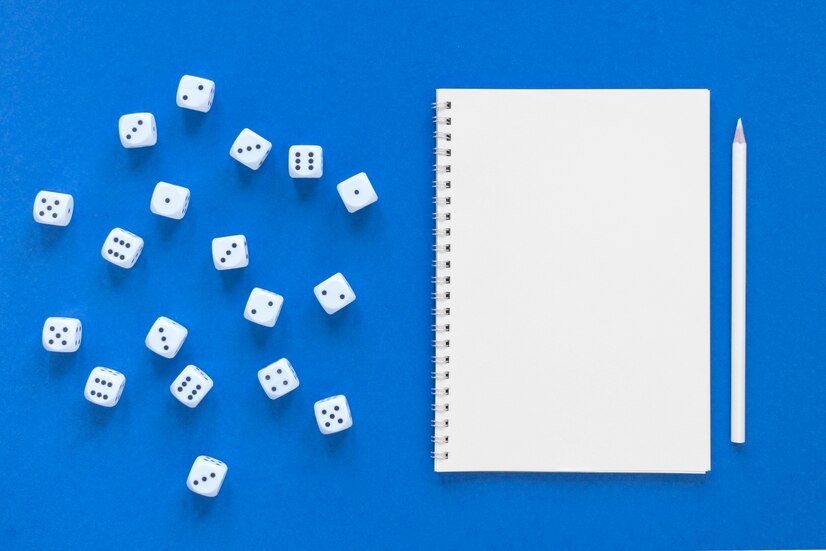
Grade: K–2
Odds and Evens is a classic math game that you can play with any number of players. You only need a piece of paper and a pencil for each player.
How to play:
Each player draws a line down the middle of their paper to create two columns. The left-hand column is for odds, and the right-hand column is for evens.
Players take turns rolling a die. Whatever number they roll, they must put that many dots in the corresponding column. The first player to reach 10 points in either column wins the game!
Looking for a hands-on way to explain odd and even numbers? See how these games can make it click for your students:
8. Twenty-One
Grade: 3–5
This classroom math game is played with a regular deck of cards. All you need to do is remove the face cards and aces, then shuffle the deck.
How to play:
Each student will need a whiteboard and marker. Deal out two cards to each player face down. One at a time, each student will turn over their top card and reveal the number to the class.
The goal is to get as close to the number “21” as possible without going over. Players can either choose to stop and keep their current score, or they can risk going over 21 by adding the value of their next card.
If a player goes over 21, they are out for that round. The last player standing is the winner.
Variation: You can also play this game with three cards instead of two.
9. Sequence Benefit
Grade: 6–8
This classroom math game leverages number sequence worksheets to give students a hands-on approach to understanding numerical order.
How to play:
Prepare by printing a set of number sequence worksheets, each highlighting a different sequence challenge that progresses in difficulty or varies in pattern (e.g., counting by twos, fives, or backwards). Distribute one scrambled sequence set to each student in the classroom.
The game’s goal is for students to arrange their strips in the correct numerical order, reconstructing the sequence on their desks. Once they believe they have correctly ordered their sequence, they should signal for you to check. After verifying the sequences, engage the class in a discussion about their strategies to determine the correct order and the patterns they observed.
Begin with printing these number sequence worksheets:
10. Buzz
Grade: Kindergarten and above
This math game is played with a group of at least four people.
How to play:
Players sit in a circle and take turns counting up from 1. However, whenever the number 7 or a multiple of 7 is said, the player whose turn it is must say “buzz”.
If a player forgets to say “buzz” or says the wrong number, they are out! The game continues until there is only one player remaining.
11. One-Yard Dash
Grade: 3–7
This math classroom game for kids is a great way to review basic math skills with your students. The objective of the game is to be the first person to reach one yard.
How to play:
Students should be divided into small teams and given measuring tapes to play.
Then they search the space for two to four items that, when added together, measure one yard in length. The groups will then measure the objects and note how accurate their estimates are.
Need a greater challenge? Instead of using a yard, give them a centimeter and instruct them to convert the results to micrometers, millimeters, and other units.
12. Create a Long Number Line on the Ground
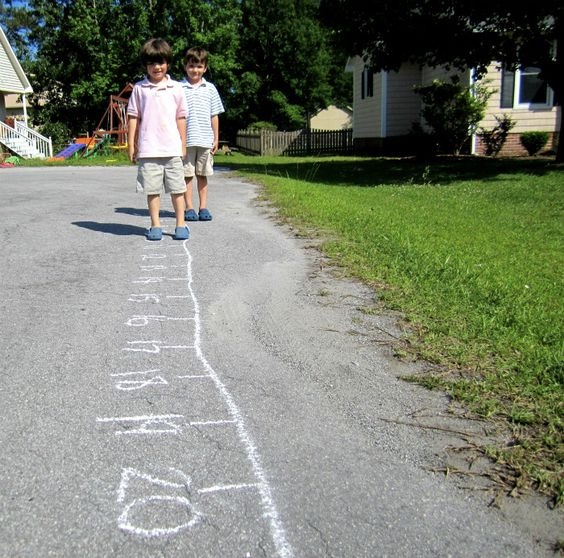
Grade: K-2
This is a great activity for teaching addition, subtraction, and place value. You will need chalk to make your number line.
How to play:
Start by writing the numbers 1–20 (or higher) on the ground. Create a starting point and an ending point with two different colors. Then have students stand at the starting point. Call out a math problem and have students solve it and move to the correct answer on the number line. For example, “If I start at seven and subtract 3, where will I end up?” From the starting point (7), students would move three spaces to the left and land on 4.
This game can also be played with a partner. Students stand on opposite ends of the number line. One player calls out a math problem, and the other player solves it and then moves to the correct answer. The first team to reach the endpoint is the winner!
Related Reading: How to Teach Addition to Kids: 9 Best Strategies
13. Graph Scavenger Hunt
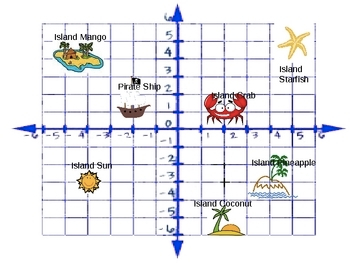
Grade: K-2
To make graphs more exciting for your students, try a graph scavenger hunt!
How to play:
You will need to create a graph with different items to be found around the classroom or school (pictures work great for this). For example, you could use a bar graph and have students find things that are red, blue, green, etc. Or you could use a picture graph and have students find things that are small, big, have four legs, etc.
Once the graph is created, students will walk around and find things that match the items on the graph. They will then color in or mark the graph to show what they found. When they are finished, they can share their findings with the class.
Related Reading: Best Scavenger Hunt Ideas for Kids Paired With Themes
14. Whack-a-Ball and Subtract
Grade: K-2
This is a variation of the classic game “Whack-a-Mole.” You will need a whiteboard, a whiteboard marker, and a softball or other small ball. To set up the game, draw a grid on the whiteboard with ten columns and ten rows. Label each column with a number from 1 to 10. In the first row of each column, write the corresponding number minus 1. So, in the first column, write “1 – 1”; in the second column, write “2 – 1”; and so on.
How to play:
One student throws the ball at the board while another student calls out a number from 1 to 10. The student who threw the ball then tried to hit the number that was called out. If they hit the number, they erase it and write the new number in its place (the number minus 1). If they miss, the other student gets the point. The game is over when all the numbers are erased from the board.
15. Number Dance
Grade: PreK-Grade 1
This is a fun way to get your students moving and practice their numbers! To set up the game, you will need some space and some music. Make a number mat by taping numbers from 1–20 on the floor (you can also write them on a piece of paper or use numbered flashcards).
How to play:
Once the mat is set up, have your students stand on a number. When the music starts, they should start dancing around! Every time the music stops, they must find a new number to stand on.
You can make the game more challenging by adding some movement rules, such as “hop on one foot when the number is even, spin around when the number is a multiple of five,” etc.
Related Reading: Best Number Activities for Preschoolers
16. Balloon Pop
Grade: K–1
This is one of the best fun math games to play in the classroom for practicing number recognition and one-to-one correspondence. You will need some balloons (blow them up ahead of time) and a Sharpie. Write a different number on each balloon using the Sharpie, then mix them up.
How to play:
Students will take turns picking a balloon and popping it. They will then count the number of pops it took to pop the balloon and say the number out loud. The student with the most popped balloons at the end of the game wins!
Related Reading: Best Counting Activities for Preschoolers
17. Spill the Beans
Grade: K-2
This is a great game for practicing addition and subtraction. The objective of the game is to collect as many beans as possible without spilling them.
How to play:
You will need a container filled with beans, a spoon, and a cup. Each player will take turns scooping up beans with the spoon and transferring them to the cup. If, at any point, the beans spill, that player will lose all of their beans. The player with the most beans at the end of the game wins!
Related Reading: Fun Addition Activities for Kindergarten Kids
18. Math Bingo!
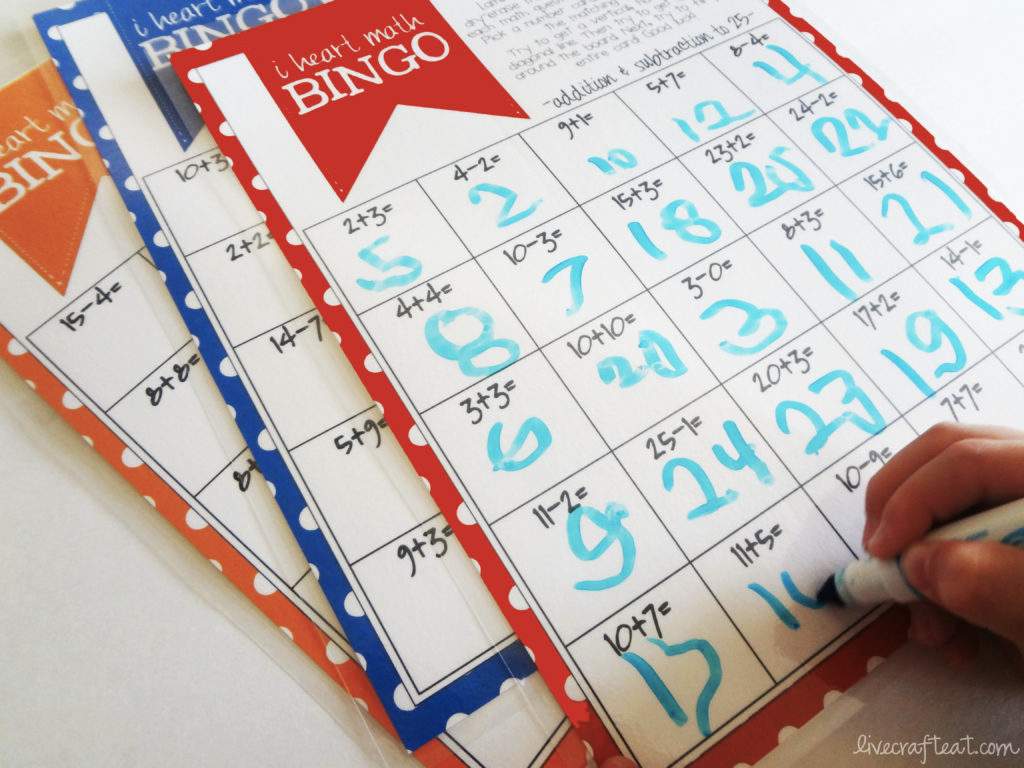
Grade: Grade 2 and above
This classic game can be used to practice any number of skills, including number recognition, counting, and addition. The objective of the game is to be the first player to get five numbers in a row (up, down, across, or diagonally).
How to play:
You will need a bingo card for each player (you can find printable bingo cards online or make your own). The caller will then draw numbers one at a time and call them out. Players will mark the numbers off on their cards if they have them. The first player to get five in a row wins!
19. Hit the Target
Grade: Grade 2-7
Math games are not only a way to pass the time, they’re also educational. This game is perfect for practicing addition, subtraction, multiplication, and division.
How to play:
All you need is a whiteboard and a dry-erase marker. Write a math problem on the board, and then have students try to hit the target (the answer) with their markers. The person who gets closest to the target wins the round.
20. EDM (Educational Dance Music)
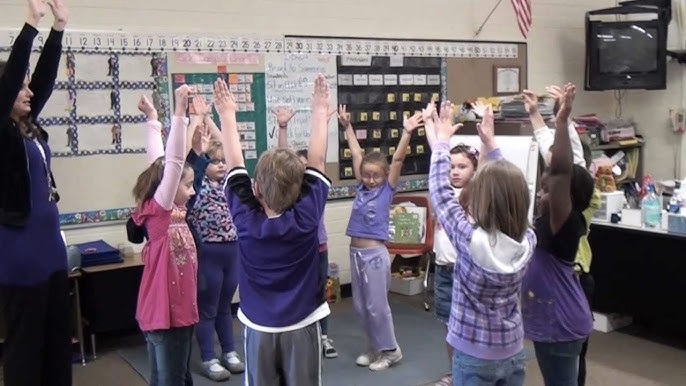
Grade: K-7
This game is perfect for getting kids up and moving while they learn math.
How to play:
Choose a song with a high BPM (beats per minute), and then have students count out the beats as they dance. For example, if the song had 120 BPM, students would count “1-2-3-4” as they danced. This game can be adapted to any math concept, such as skip counting or finding fractions of a whole.
21. The Number Detective Game
Grade: 1–3
This is a great game for helping kids practice their addition, subtraction, and multiplication skills. You will need a whiteboard, marker, and eraser.
How to play:
Write a number on the board and then challenge your students to solve various math problems using that number. For instance, you might write “78” and then ask students to find all the numbers that add up to 78.
You can also have students solve for two numbers at once to make things more challenging. For example, if you write “78” and “15,” students would then need to find all the numbers that add up to 78 and all the numbers that multiply to 15.
Let’s Play with Numbers!
So there you have it, 21 best classroom math games for kids that are not only super fun to play but also educational. These games are perfect for reinforcing math concepts and skills. So get out there and make your classroom a fun and interactive learning environment!
Frequently Asked Questions (FAQs)
What is the best way to use math games in the classroom?
Fun math classroom games are a great way to engage students and get them excited about learning. To get the most out of these games, it is important to use them to supplement your regular lesson plans. Use classroom math games as a way to review concepts that have already been taught or as a way to introduce new concepts.
What is the impact of playing classroom math games?
Classroom math games offer a number of benefits for students, including
- improved problem-solving skills
- increased confidence in math
- a better understanding of math concepts
- greater interest in math
Where can I find more math games for my students?
There are a number of ways to find more math games for your students. SplashLearn offers a comprehensive math learning program for grades PreK–5, with over 4,000 interactive games.
How are math games used effectively in the classroom?
Here are a few tips to incorporate math games in the classroom:
- Set aside time each week for students to play math games.
- Integrate math games into your regular lesson plans.
- Encourage students to play at home as well.
- Choose games that are appropriate for your student’s skill level.
- Monitor students’ progress and adjust accordingly.

















